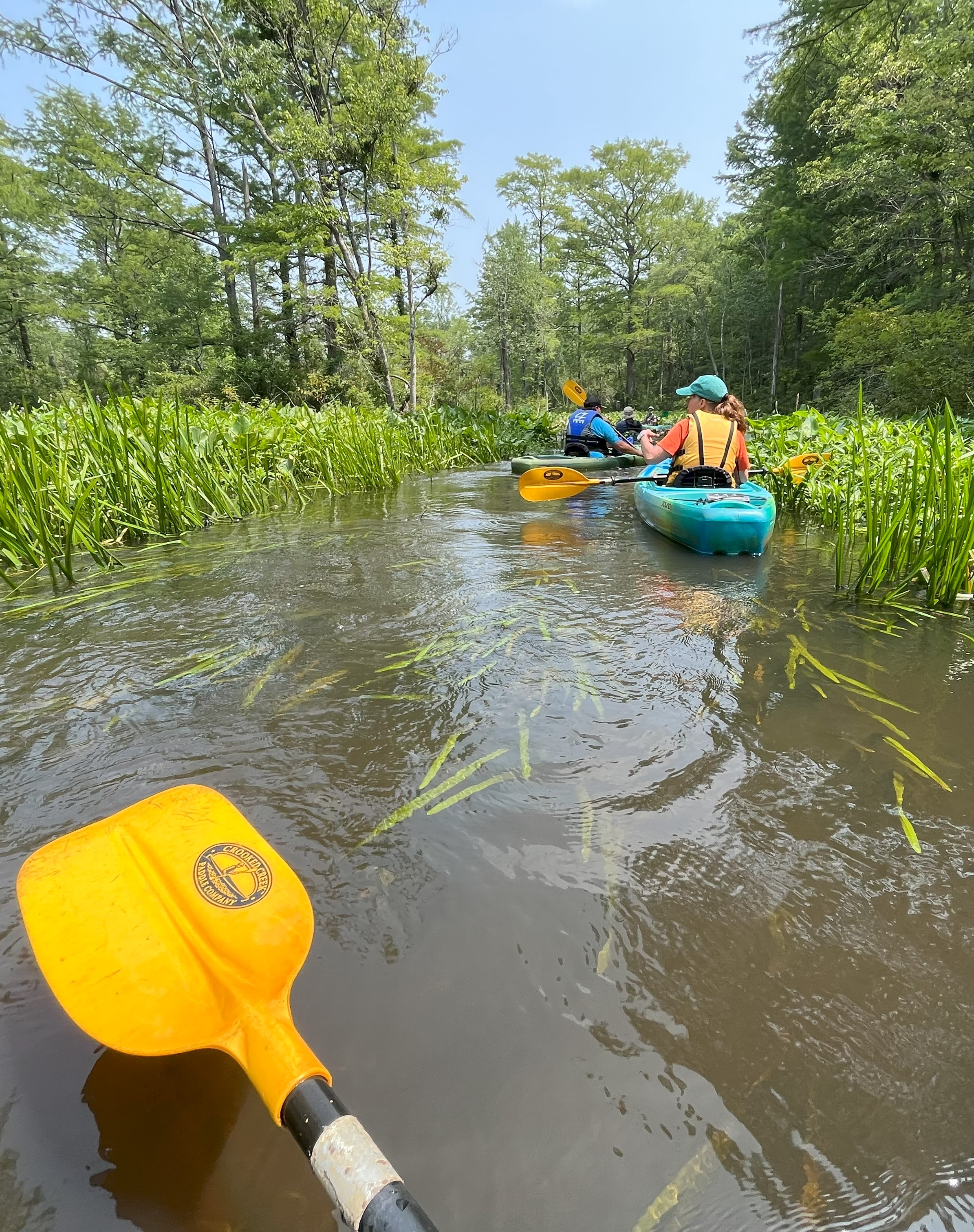Watershed System 101
Welcome to the York Watershed System!
{{youtube:large:center|n9zx7QmyLho, Welcome to the York Watershed System video.}}
You’ve seen the video (^^hint hint)... Now dig into the details and explore more of the York Watershed System!
Dig in
More than 630,000 people call the York Watershed System home, a region that is 75% natural. As our numbers grow and the climate changes, how is our experience in the System evolving? Take a tour over land and into our waters as you learn about our changing landscape, our water quality, and the resources we steward in the State of the York Watershed System.
State of the York Watershed System
Explore More
Ready to fish and swim in your York Watershed System waters?
At least 68 public access sites in the System offer opportunities for outdoor, water-based recreation - accessible by land! Explore what they have to offer in our story map linked below.
Visiting Gloucester County? Get a glimpse of Gloucester Point Beach Park and Machicomoco State Park.
Responsible ripple effects
Creating a positive ripple effect takes just a DROP! Help maintain the integrity of our shared water resources and their neighboring lands by recreating with these points in mind:
{{youtube:medium:right|Ssb96DogiDM, Our shared waters depend on us to keep them healthy and thriving. Ensure your ripple effect is a positive one by learning how to DROP (video).}}
- Deepen your understanding of the issues. Explore the information and tools in this report and continue to ask meaningful questions of the topics they address. Through education and information exchange, we can make informed decisions and help others, including the elected officials we vote on, do the same.
- Recreate responsibly in, and on, our shared waters. Enjoy our shared waters but remember they are just that: shared! We share them not only with each other, but with the natural world. As you celebrate all our System has to offer, aim to take only pictures and leave no trace.

- Opt-in to conscious consumption. As a consumer, your purchases and habits have the power to impact the environment for better or worse. Moreover, the environment is responding to the impact of our collective purchases and uses, and has the potential to impact us (think: flooding). When you’re making a purchase (be it for food or clothing, house goods or yard supplies, or even a house itself), or taking an action (like getting from point a to point b), consider the impact on the environment, and the environment’s potential impact on you. Are there more sustainable alternatives available?
- Participate in community efforts. Science and restoration are happening all around us and you can take part! Help monitor your favorite System species, or the water quality in your backyard; plant a tree, install a living shoreline, or make oyster reef balls. For ideas on how to plug into these efforts, connect with the York River and Small Coastal Basin Roundtable. Sign up as a Roundtable member to join water quality and conservation-minded partners in information sharing and collaboration on all things York Watershed System.
Practitioners
Are you a resource manager in the York Watershed System? Metadata on public access sites is accessible in support of your work. Contact cagonzalez@vims.edu for details on this comprehensive inventory.
Thank you

This project was completed in association with Gloucester County and Machicomoco State Park.
Thank you to Consociate Media for film creation.
Other contributors include:
- CBNERR-VA
- Alex Demeo (Film and Data)
- George Brooks and Erin Reilly (Data)
- Valerie Johnson (Signage)
- Stephanie Letourneau (StoryMap)
- Green Fin Studio (Film)
Funding:
This project was funded by the Chesapeake Bay National Estuarine Research Reserve in Virginia and the Virginia Coastal Zone Management Program at the Department of Environmental Quality through Grant #NA23NOS4190255 of the U.S. Department of Commerce, National Oceanic and Atmospheric Administration, under the Coastal Zone Management Act of 1972, as amended.



